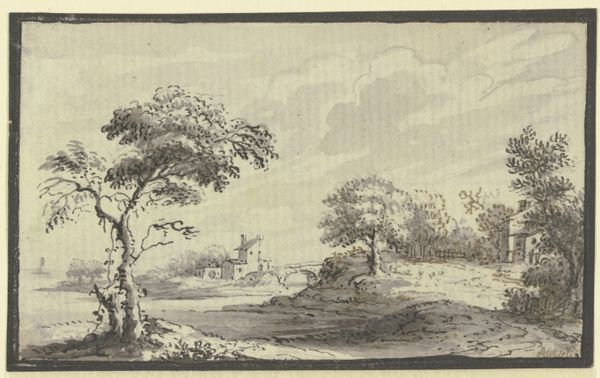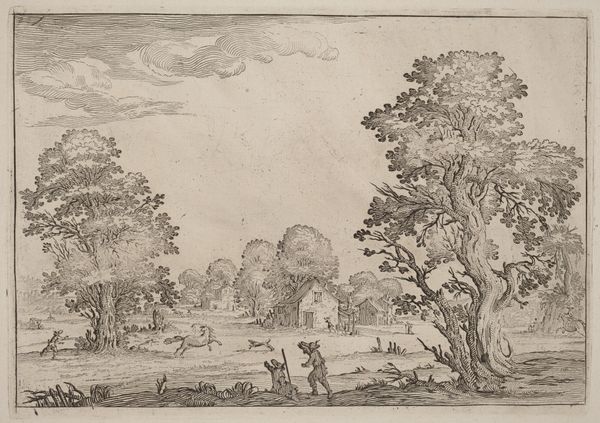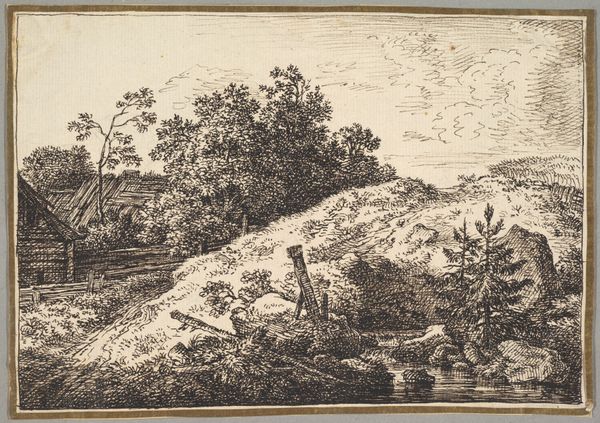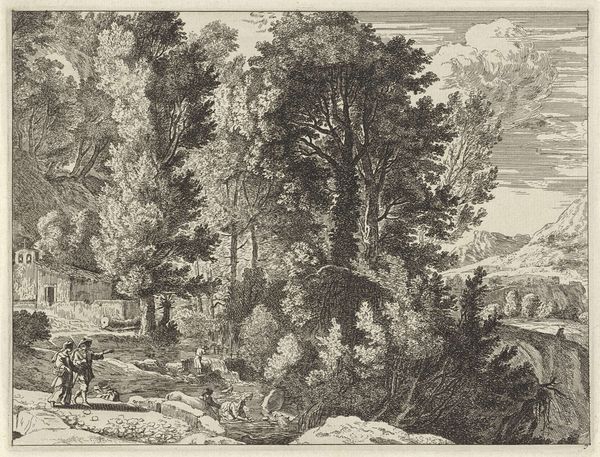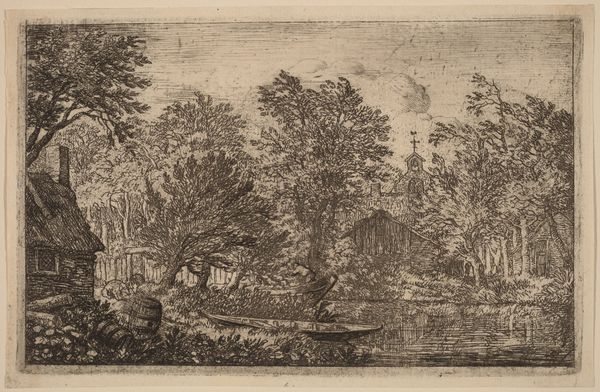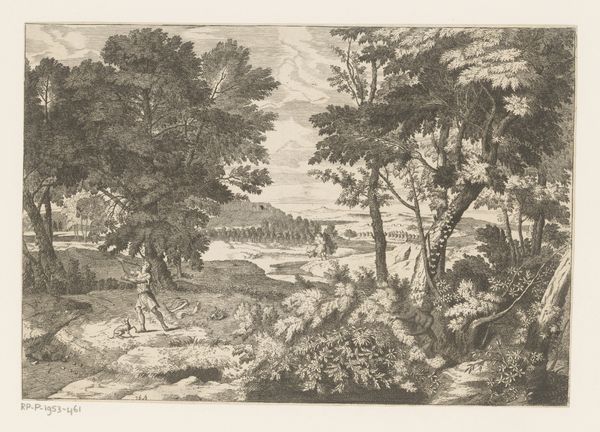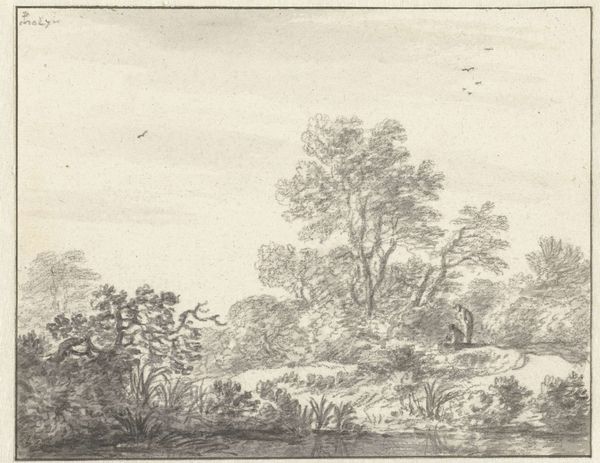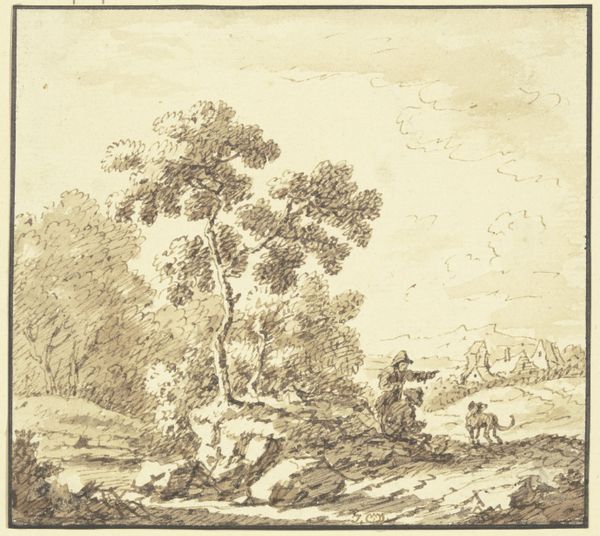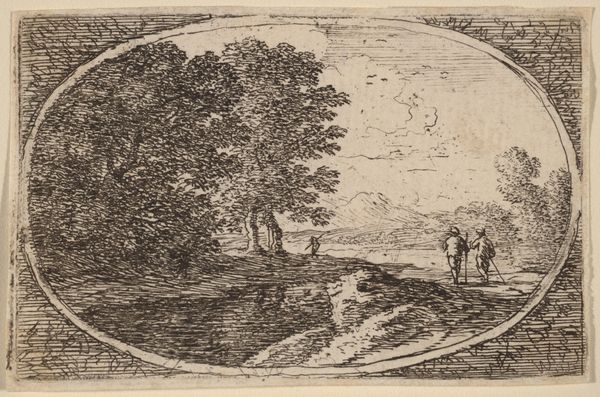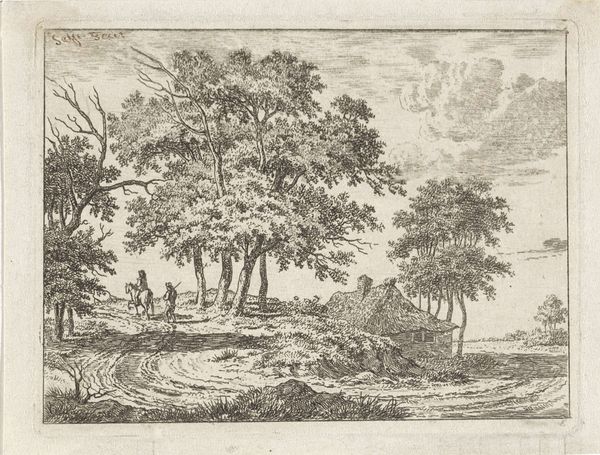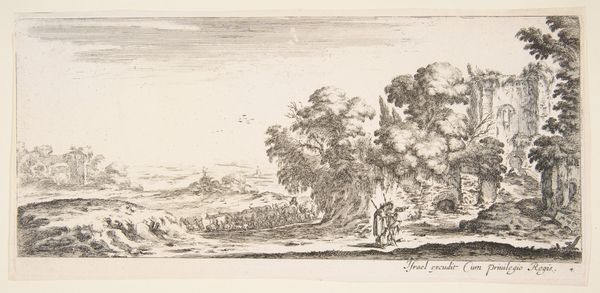
drawing, print, etching, engraving
#
drawing
#
medieval
# print
#
etching
#
landscape
#
figuration
#
history-painting
#
engraving
Dimensions: Plate: 4 13/16 × 6 1/4 in. (12.3 × 15.8 cm) Sheet: 5 3/16 × 6 7/16 in. (13.1 × 16.3 cm)
Copyright: Public Domain
Editor: This is "The Three Porters," an etching by Allart van Everdingen, created sometime between 1630 and 1675. The figures feel really small compared to the landscape around them. It's making me think about scale, and labor in general. How do you interpret this work? Curator: Looking at this, I’m immediately drawn to the process of etching itself. Think about the labor involved, the copper plate, the acid, the precision needed to create this landscape. Does the material nature of printmaking, this reproducible image, democratize or diminish the experience being portrayed here, of figures engaged in work? Editor: That's an interesting way to think about it. It feels… less romantic when you focus on the 'making of' instead of the 'seeing of'. Curator: Exactly! And consider who would have consumed this image. Was it for the same class depicted as labourers within the frame? Or was it a product fashioned and consumed for an elite audience, a vicarious engagement with labour from a safe distance? Is Everdingen inviting us to consider the social relations embedded in landscape, labor, and consumption? Editor: I see your point. The material process and intended audience really changes how we understand the subject matter itself. So it’s less about just a pretty scene, and more about…the economics of art? Curator: In a way, yes. Art doesn't exist in a vacuum. Its production and consumption are intrinsically tied to the socio-economic fabric of its time. And looking closely at the material conditions helps us understand that. Editor: Wow, I hadn’t considered all that. I’ll definitely be thinking about the "how" and "for whom" next time I look at art. Thanks! Curator: It's these material considerations that bridge the gap between observer and artwork. Always remember that art objects carry the weight of their production and social context.
Comments
No comments
Be the first to comment and join the conversation on the ultimate creative platform.

